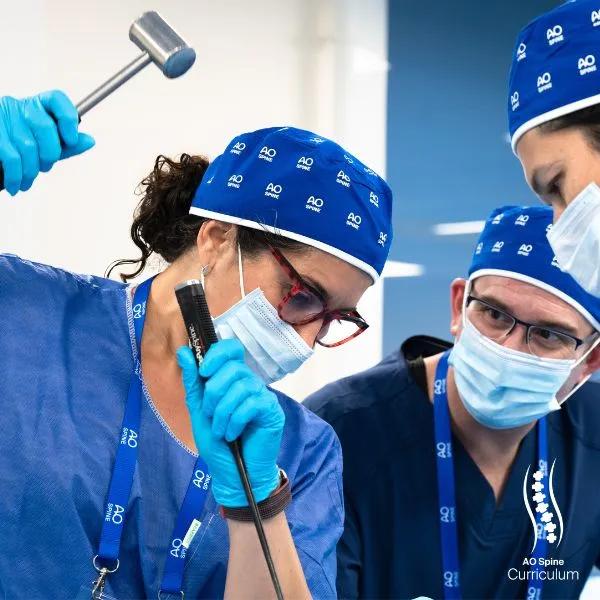Direct osteosynthesis of the isthmus
1. Introduction
A careful evaluation of the fracture pattern is essential for this procedure. If the fracture does not run through the interarticular portion of C2, the screw trajectory will need to be modified.
2. Reduction
Reduction is performed under image intensification. Extension or flexion is applied depending on the position of the fragments. Reduction should not include traction maneuvers.

A short K-wire may be inserted bilaterally to hold the reduction temporarily. Great care must be taken not to damage the surrounding structure during this insertion. The K-wire will typically not need to be inserted further than 1 cm.
3. Approach and positioning
This procedure is performed using a posterior approach with the patient placed in the prone position.
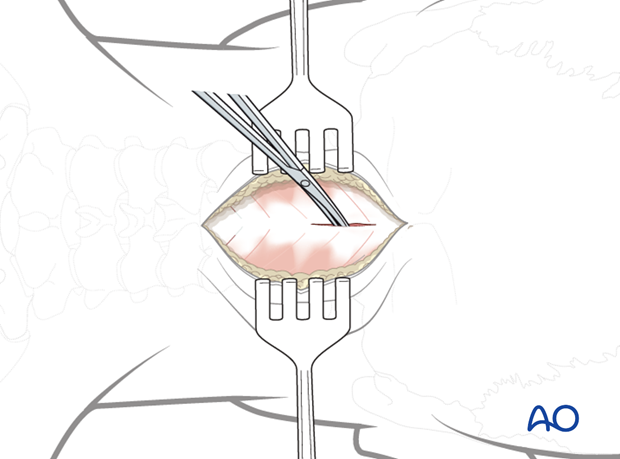
4. Fixation
The typical osteosynthesis is performed according to the technique of C2 pedicle screws; however, they are inserted as lag screws.

Screw entry point
The pedicle screw starts more cranially than the pars screw and is directed medially.
To find the starting point for the pedicle screw, draw a line along the cranial leading edge of the C2 lamina (1).
Then, draw a line along the midpoint of the pars mediolaterally (2) (see illustration).
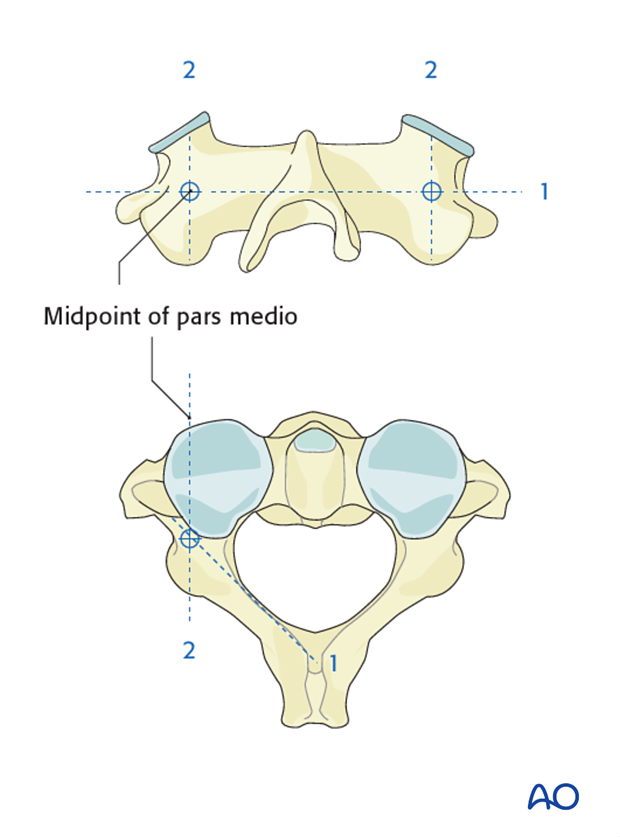
Drilling
Burr a starting hole 2 mm lateral to the intersection of line 1 and line 2.
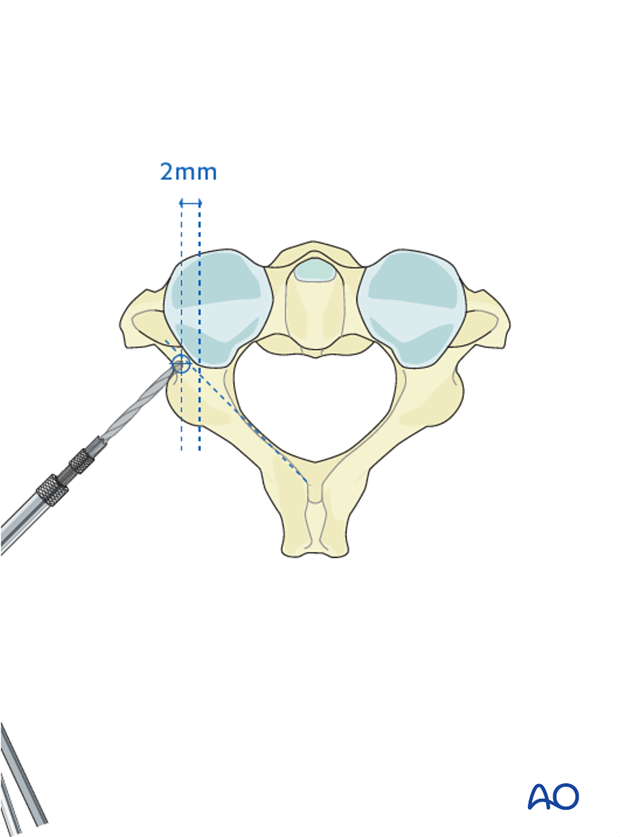
Remove one K-wire and use either a pedicle probe or a handheld drill to drill the hole for the pedicle screw.
The direction of the drill is approximately 30° to 45° medial and craniocaudally angled to the bottom half of the tubercle of C1.
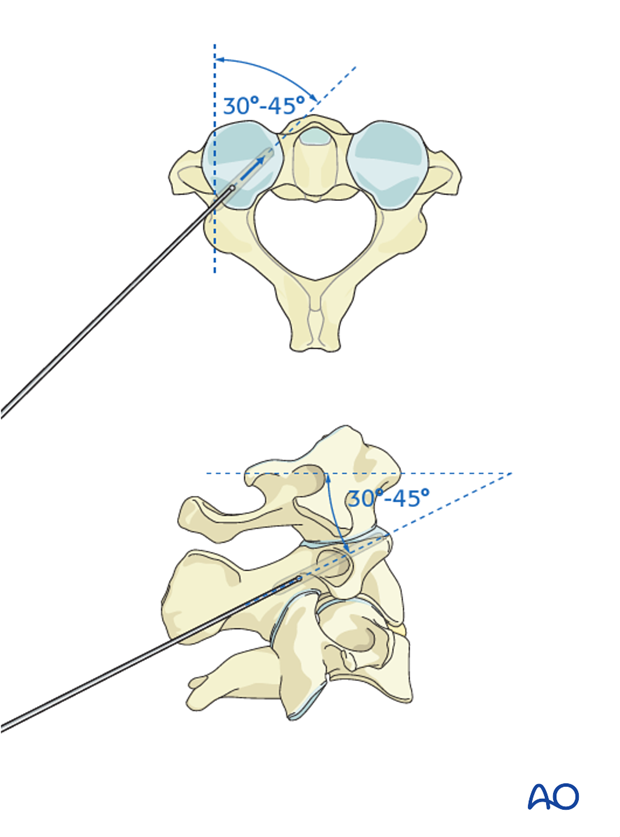
Screw insertion
Tap, measure the length, and place a 3.5 mm cortex screw or lag screw. Screw length is typically between 25 mm and 35 mm.
The procedure is then repeated on the contralateral side.
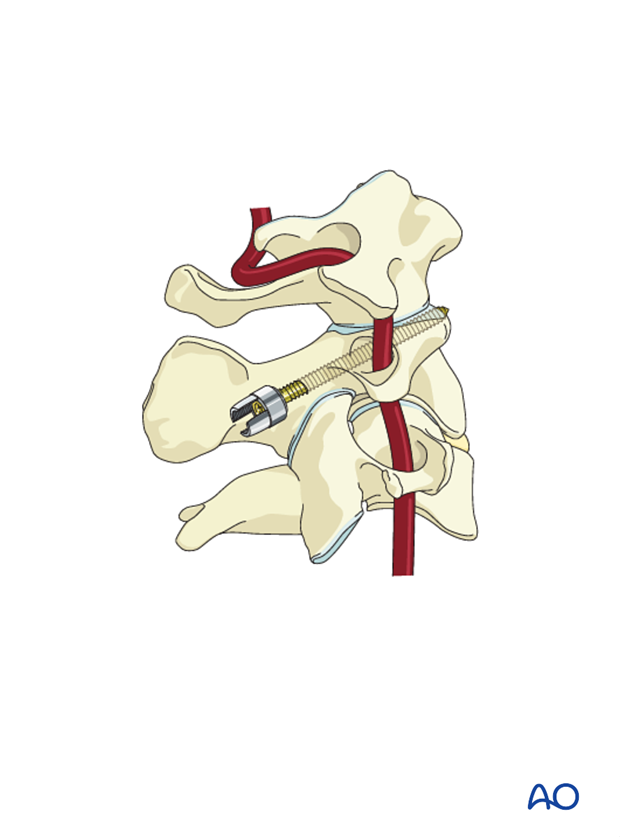
5. Aftercare
Patients are made to sit up in bed in the evening after the operation.
A collar is commonly used following surgical stabilization to moderate patient activity.
The purpose of a collar is to prevent ranges of motion outside of limits deemed favorable for fracture healing. The collar is optional.
Patients with intact neurological status are made to stand and walk on the first day after surgery. Patients can be discharged when medically stable or sent to a rehabilitation center if further care is necessary. This depends on the comfort levels and presence of other associated injuries.
Patients are generally followed with periodical x-rays at 6 weeks, 3 months, 6 months, and 1 year.
